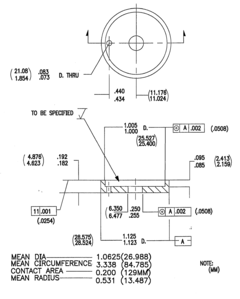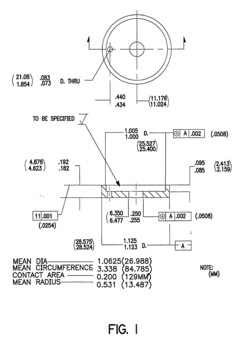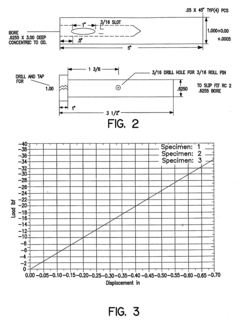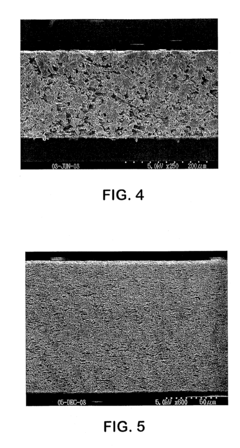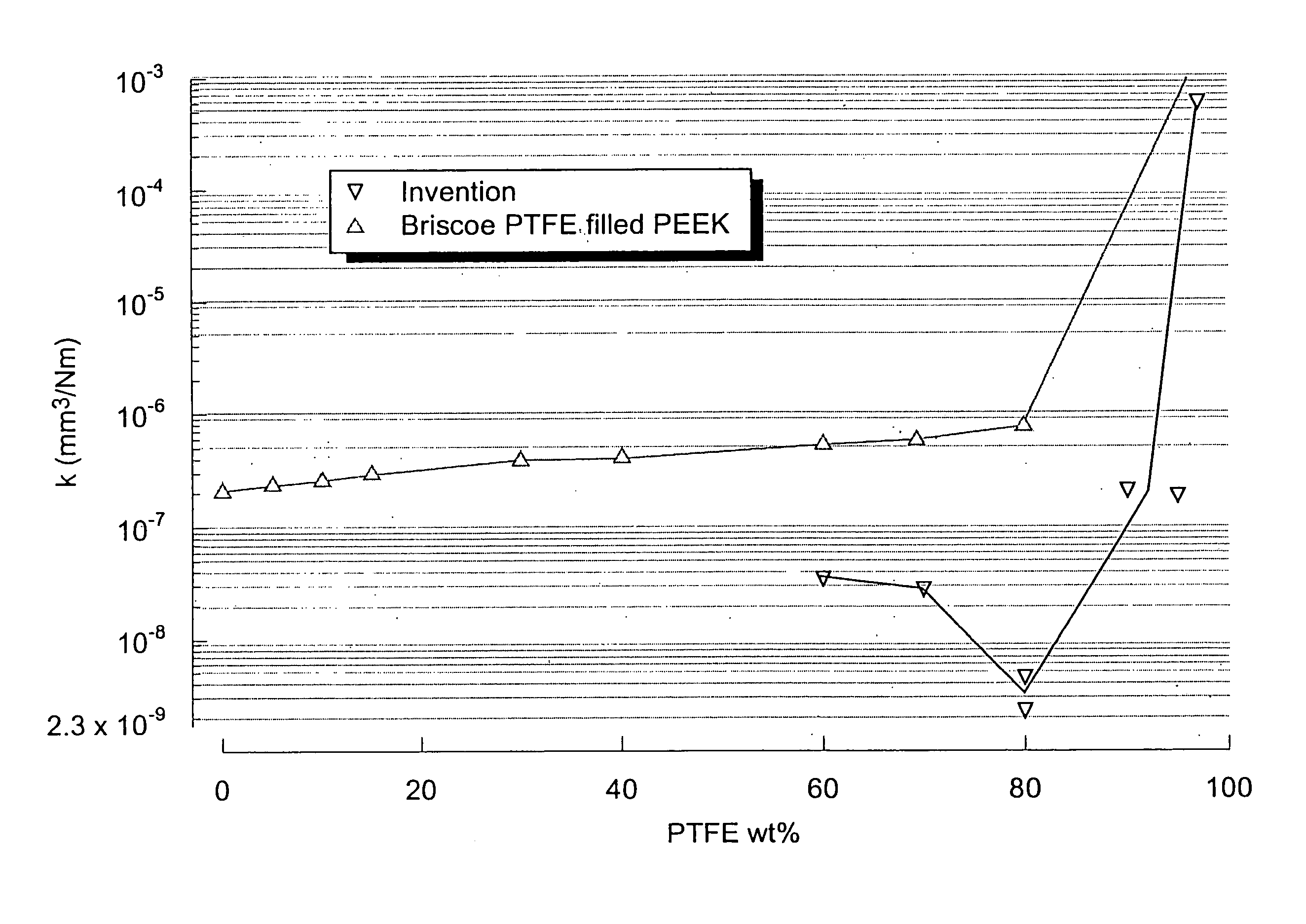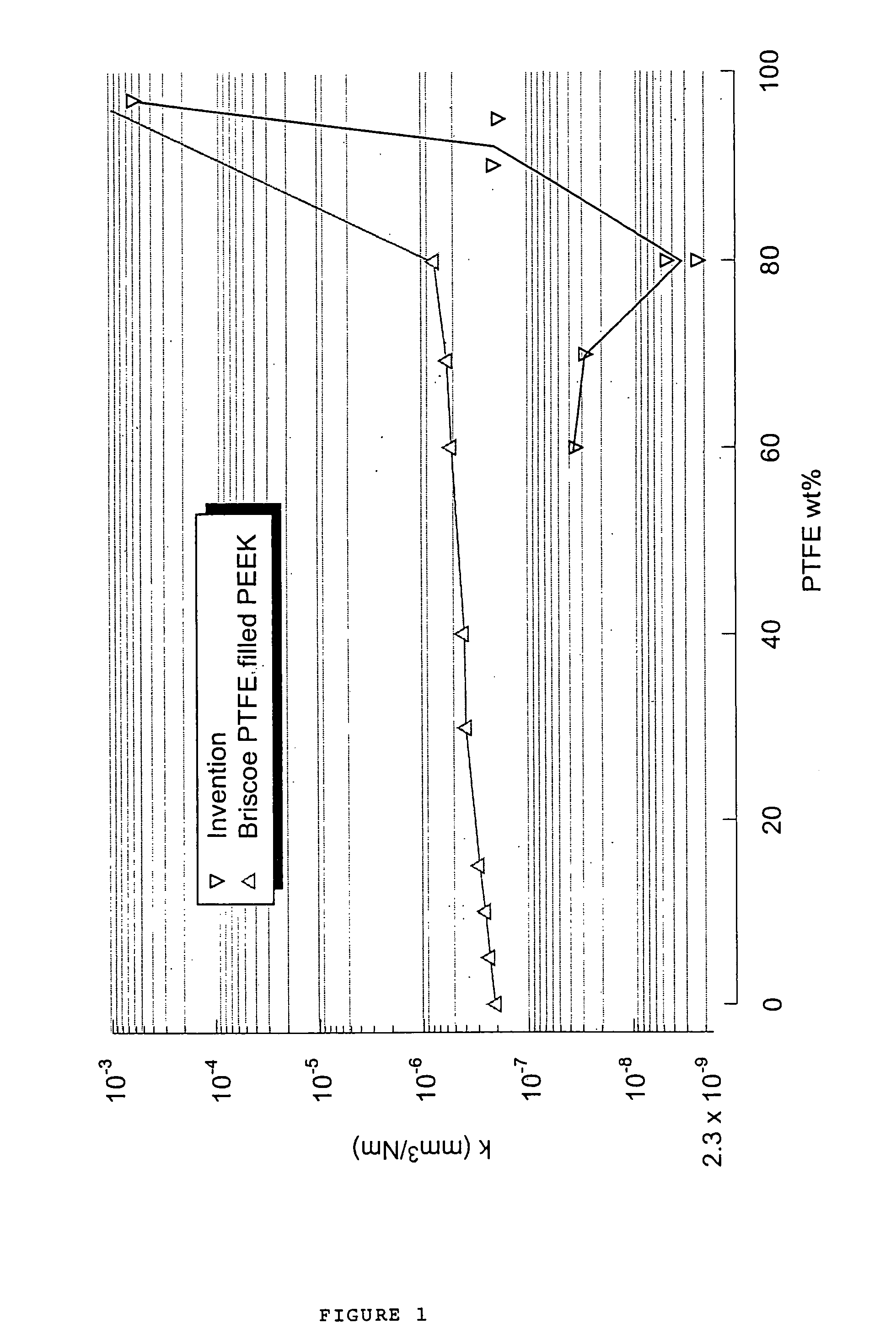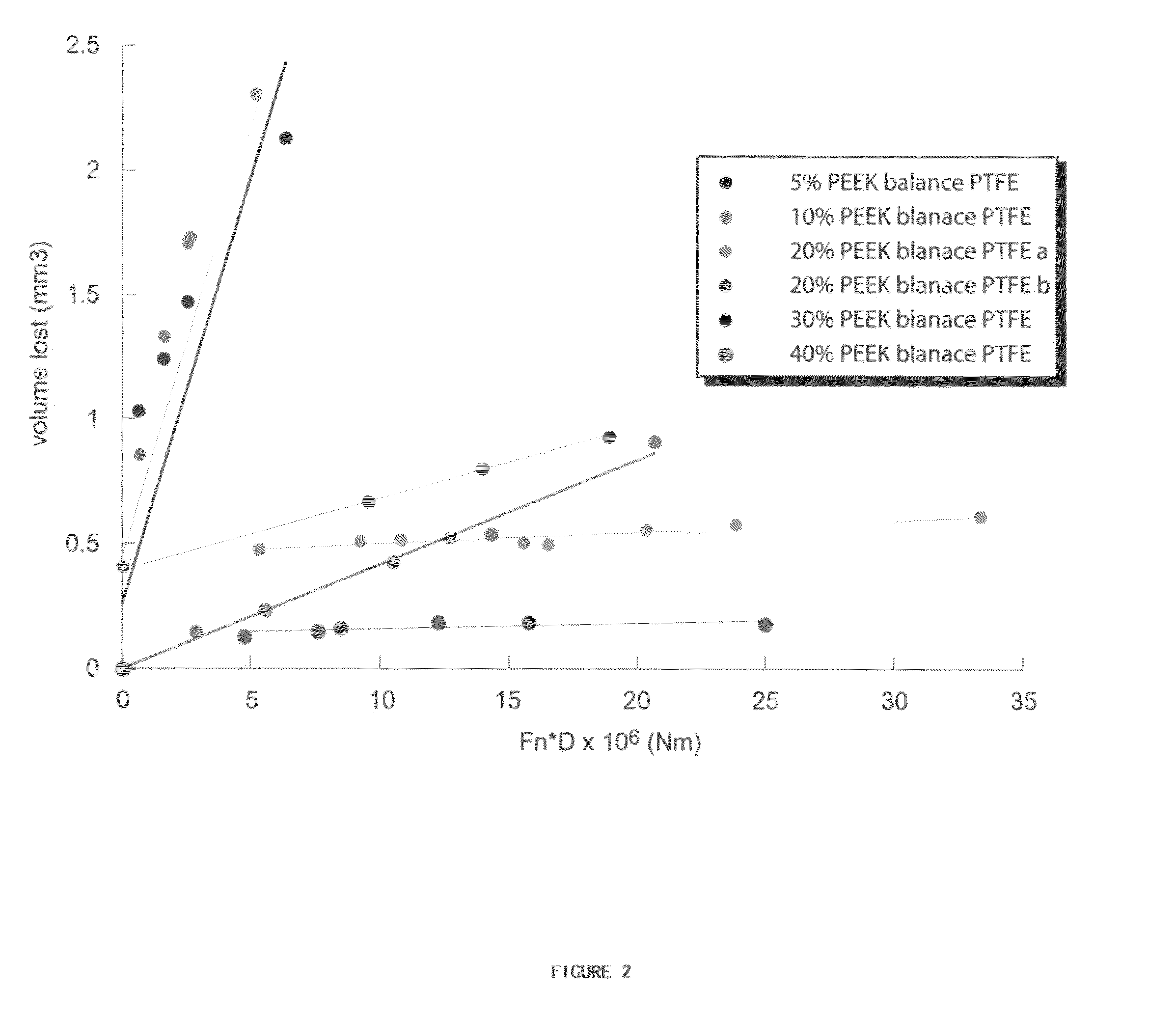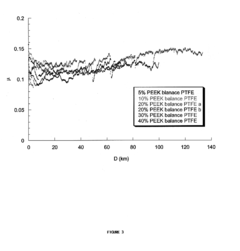How to Innovate Transportation Technologies Using PTFE?
JUN 27, 20259 MIN READ
Generate Your Research Report Instantly with AI Agent
Patsnap Eureka helps you evaluate technical feasibility & market potential.
PTFE in Transportation: Background and Objectives
Polytetrafluoroethylene (PTFE), commonly known as Teflon, has been a revolutionary material in various industries since its accidental discovery in 1938. In the transportation sector, PTFE's unique properties have paved the way for significant advancements and innovations. This technical research report aims to explore the potential of PTFE in revolutionizing transportation technologies, focusing on its background and objectives.
PTFE's journey in transportation began with its application in aerospace and automotive industries due to its exceptional chemical resistance, low friction coefficient, and high-temperature stability. As transportation technologies evolved, the demand for materials that could withstand extreme conditions while improving efficiency became paramount. PTFE emerged as a solution to many challenges faced by engineers and designers in the transportation sector.
The primary objective of incorporating PTFE in transportation technologies is to enhance performance, durability, and safety across various modes of transport. In the automotive industry, PTFE coatings and components have been instrumental in reducing friction, improving fuel efficiency, and extending the lifespan of critical parts. In aerospace, PTFE's thermal stability and lightweight nature have made it indispensable for aircraft components, contributing to improved fuel economy and reduced emissions.
As the transportation industry faces increasing pressure to become more sustainable and environmentally friendly, PTFE's role has expanded. Its ability to reduce friction and wear not only improves energy efficiency but also extends the life of components, reducing the need for frequent replacements and minimizing waste. This aligns with the global push towards more sustainable transportation solutions.
The evolution of PTFE applications in transportation has been marked by continuous innovation. From simple coatings to advanced composite materials, researchers and engineers have been exploring new ways to leverage PTFE's unique properties. The development of PTFE-based nanomaterials and smart coatings represents the cutting edge of this technology, promising even greater improvements in performance and efficiency.
Looking ahead, the objectives for PTFE in transportation technologies are multifaceted. There is a growing focus on developing PTFE-based materials that can contribute to the electrification of vehicles, improve battery technologies, and enhance the performance of alternative fuel systems. Additionally, researchers are exploring ways to make PTFE more environmentally friendly throughout its lifecycle, addressing concerns about its persistence in the environment.
In conclusion, the background and objectives of PTFE in transportation technologies reflect a journey of continuous innovation and adaptation. From its early applications to its current role in advancing sustainable and efficient transportation solutions, PTFE remains a critical material in the industry's technological evolution. The ongoing research and development in this field promise to unlock new potentials for PTFE, driving the transportation sector towards a more efficient, sustainable, and technologically advanced future.
PTFE's journey in transportation began with its application in aerospace and automotive industries due to its exceptional chemical resistance, low friction coefficient, and high-temperature stability. As transportation technologies evolved, the demand for materials that could withstand extreme conditions while improving efficiency became paramount. PTFE emerged as a solution to many challenges faced by engineers and designers in the transportation sector.
The primary objective of incorporating PTFE in transportation technologies is to enhance performance, durability, and safety across various modes of transport. In the automotive industry, PTFE coatings and components have been instrumental in reducing friction, improving fuel efficiency, and extending the lifespan of critical parts. In aerospace, PTFE's thermal stability and lightweight nature have made it indispensable for aircraft components, contributing to improved fuel economy and reduced emissions.
As the transportation industry faces increasing pressure to become more sustainable and environmentally friendly, PTFE's role has expanded. Its ability to reduce friction and wear not only improves energy efficiency but also extends the life of components, reducing the need for frequent replacements and minimizing waste. This aligns with the global push towards more sustainable transportation solutions.
The evolution of PTFE applications in transportation has been marked by continuous innovation. From simple coatings to advanced composite materials, researchers and engineers have been exploring new ways to leverage PTFE's unique properties. The development of PTFE-based nanomaterials and smart coatings represents the cutting edge of this technology, promising even greater improvements in performance and efficiency.
Looking ahead, the objectives for PTFE in transportation technologies are multifaceted. There is a growing focus on developing PTFE-based materials that can contribute to the electrification of vehicles, improve battery technologies, and enhance the performance of alternative fuel systems. Additionally, researchers are exploring ways to make PTFE more environmentally friendly throughout its lifecycle, addressing concerns about its persistence in the environment.
In conclusion, the background and objectives of PTFE in transportation technologies reflect a journey of continuous innovation and adaptation. From its early applications to its current role in advancing sustainable and efficient transportation solutions, PTFE remains a critical material in the industry's technological evolution. The ongoing research and development in this field promise to unlock new potentials for PTFE, driving the transportation sector towards a more efficient, sustainable, and technologically advanced future.
Market Analysis for PTFE-Enhanced Transportation
The market for PTFE-enhanced transportation technologies is experiencing significant growth, driven by the increasing demand for high-performance materials in various transportation sectors. PTFE, known for its exceptional properties such as low friction, chemical resistance, and thermal stability, is finding new applications in automotive, aerospace, and marine industries.
In the automotive sector, PTFE is being utilized in various components to improve fuel efficiency and reduce wear. The global automotive PTFE market is projected to expand at a steady rate, with applications in seals, gaskets, and bearings showing particular promise. As vehicle manufacturers strive to meet stringent emissions regulations and improve overall performance, the demand for PTFE-based solutions is expected to rise.
The aerospace industry represents another key market for PTFE-enhanced technologies. With the growing emphasis on lightweight materials and fuel efficiency in aircraft design, PTFE is being incorporated into various aerospace components. The market for PTFE in aerospace applications is forecasted to grow substantially, driven by the increasing production of commercial and military aircraft.
In the marine sector, PTFE is gaining traction due to its corrosion-resistant properties and ability to withstand harsh marine environments. The use of PTFE in marine coatings, seals, and propulsion systems is expected to increase, particularly as the shipping industry focuses on improving fuel efficiency and reducing maintenance costs.
The market for PTFE in transportation is also being influenced by emerging trends such as electric vehicles (EVs) and autonomous transportation systems. In EVs, PTFE is being used in battery components and thermal management systems, contributing to improved performance and longevity. As the EV market continues to expand rapidly, the demand for PTFE in this sector is expected to grow correspondingly.
Geographically, North America and Europe currently lead the market for PTFE-enhanced transportation technologies, owing to their advanced automotive and aerospace industries. However, the Asia-Pacific region is emerging as a significant market, driven by rapid industrialization, increasing automotive production, and growing aerospace sectors in countries like China and India.
Despite the positive outlook, the market faces challenges such as the high cost of PTFE production and environmental concerns related to fluoropolymer manufacturing. These factors may impact market growth and drive research into more sustainable production methods and alternative materials. Nevertheless, ongoing innovations in PTFE formulations and manufacturing processes are expected to address some of these challenges and open up new opportunities in the transportation sector.
In the automotive sector, PTFE is being utilized in various components to improve fuel efficiency and reduce wear. The global automotive PTFE market is projected to expand at a steady rate, with applications in seals, gaskets, and bearings showing particular promise. As vehicle manufacturers strive to meet stringent emissions regulations and improve overall performance, the demand for PTFE-based solutions is expected to rise.
The aerospace industry represents another key market for PTFE-enhanced technologies. With the growing emphasis on lightweight materials and fuel efficiency in aircraft design, PTFE is being incorporated into various aerospace components. The market for PTFE in aerospace applications is forecasted to grow substantially, driven by the increasing production of commercial and military aircraft.
In the marine sector, PTFE is gaining traction due to its corrosion-resistant properties and ability to withstand harsh marine environments. The use of PTFE in marine coatings, seals, and propulsion systems is expected to increase, particularly as the shipping industry focuses on improving fuel efficiency and reducing maintenance costs.
The market for PTFE in transportation is also being influenced by emerging trends such as electric vehicles (EVs) and autonomous transportation systems. In EVs, PTFE is being used in battery components and thermal management systems, contributing to improved performance and longevity. As the EV market continues to expand rapidly, the demand for PTFE in this sector is expected to grow correspondingly.
Geographically, North America and Europe currently lead the market for PTFE-enhanced transportation technologies, owing to their advanced automotive and aerospace industries. However, the Asia-Pacific region is emerging as a significant market, driven by rapid industrialization, increasing automotive production, and growing aerospace sectors in countries like China and India.
Despite the positive outlook, the market faces challenges such as the high cost of PTFE production and environmental concerns related to fluoropolymer manufacturing. These factors may impact market growth and drive research into more sustainable production methods and alternative materials. Nevertheless, ongoing innovations in PTFE formulations and manufacturing processes are expected to address some of these challenges and open up new opportunities in the transportation sector.
Current PTFE Applications and Challenges in Transportation
Polytetrafluoroethylene (PTFE), commonly known as Teflon, has found widespread applications in the transportation sector due to its unique properties. In automotive applications, PTFE is extensively used in seals, gaskets, and bearings, providing excellent resistance to high temperatures, chemicals, and friction. Its low coefficient of friction makes it ideal for reducing wear and tear in moving parts, thereby enhancing the longevity of vehicle components.
In the aerospace industry, PTFE plays a crucial role in various applications, including fuel systems, hydraulic seals, and electrical insulation. Its ability to withstand extreme temperatures and maintain its properties in harsh environments makes it invaluable for aircraft and spacecraft components. PTFE coatings are also used on aircraft exteriors to reduce drag and improve fuel efficiency.
The marine transportation sector utilizes PTFE in propeller shaft seals, valve seats, and bearings, where its corrosion resistance and low friction properties are particularly beneficial. In railway systems, PTFE is employed in pantograph sliding strips, improving current collection and reducing wear on overhead lines.
Despite its widespread use, PTFE faces several challenges in transportation applications. One significant issue is its relatively high cost compared to alternative materials, which can limit its adoption in cost-sensitive markets. Additionally, while PTFE exhibits excellent non-stick properties, this characteristic can sometimes lead to difficulties in bonding or adhering to other materials, requiring specialized techniques for integration into complex systems.
Another challenge is the environmental concern associated with PTFE production and disposal. The manufacturing process of PTFE involves the use of perfluorooctanoic acid (PFOA), which has been linked to environmental and health issues. Although efforts have been made to phase out PFOA, finding sustainable alternatives remains an ongoing challenge for the industry.
The wear resistance of PTFE, while generally good, can be a limitation in high-load or high-speed applications typical in transportation. This has led to the development of PTFE composites and blends to enhance its mechanical properties, but optimizing these formulations for specific transportation needs continues to be an area of active research and development.
Lastly, the thermal expansion of PTFE can be problematic in certain transportation applications where precise dimensional stability is required across a wide temperature range. Engineers must carefully consider this factor when designing components, often necessitating complex design solutions to accommodate thermal expansion while maintaining system integrity.
In the aerospace industry, PTFE plays a crucial role in various applications, including fuel systems, hydraulic seals, and electrical insulation. Its ability to withstand extreme temperatures and maintain its properties in harsh environments makes it invaluable for aircraft and spacecraft components. PTFE coatings are also used on aircraft exteriors to reduce drag and improve fuel efficiency.
The marine transportation sector utilizes PTFE in propeller shaft seals, valve seats, and bearings, where its corrosion resistance and low friction properties are particularly beneficial. In railway systems, PTFE is employed in pantograph sliding strips, improving current collection and reducing wear on overhead lines.
Despite its widespread use, PTFE faces several challenges in transportation applications. One significant issue is its relatively high cost compared to alternative materials, which can limit its adoption in cost-sensitive markets. Additionally, while PTFE exhibits excellent non-stick properties, this characteristic can sometimes lead to difficulties in bonding or adhering to other materials, requiring specialized techniques for integration into complex systems.
Another challenge is the environmental concern associated with PTFE production and disposal. The manufacturing process of PTFE involves the use of perfluorooctanoic acid (PFOA), which has been linked to environmental and health issues. Although efforts have been made to phase out PFOA, finding sustainable alternatives remains an ongoing challenge for the industry.
The wear resistance of PTFE, while generally good, can be a limitation in high-load or high-speed applications typical in transportation. This has led to the development of PTFE composites and blends to enhance its mechanical properties, but optimizing these formulations for specific transportation needs continues to be an area of active research and development.
Lastly, the thermal expansion of PTFE can be problematic in certain transportation applications where precise dimensional stability is required across a wide temperature range. Engineers must carefully consider this factor when designing components, often necessitating complex design solutions to accommodate thermal expansion while maintaining system integrity.
Existing PTFE-Based Solutions for Transportation
01 PTFE manufacturing and processing methods
Various techniques for manufacturing and processing PTFE are described, including methods for producing PTFE fibers, films, and other forms. These processes often involve specific temperature and pressure conditions, as well as the use of specialized equipment to achieve desired properties in the final product.- PTFE manufacturing processes: Various methods for producing PTFE are described, including polymerization techniques, extrusion processes, and molding methods. These processes aim to improve the quality, efficiency, and properties of the resulting PTFE products.
- PTFE composite materials: PTFE is often combined with other materials to create composite products with enhanced properties. These composites may include fillers, reinforcing agents, or other polymers to improve mechanical strength, thermal stability, or specific functional characteristics.
- Surface modification of PTFE: Techniques for modifying the surface of PTFE materials are explored to enhance properties such as adhesion, wettability, or biocompatibility. These modifications may involve chemical treatments, plasma processing, or the application of coatings.
- PTFE in membrane technology: PTFE is widely used in membrane applications due to its chemical resistance and non-stick properties. Innovations in this area focus on improving membrane performance, durability, and selectivity for various separation processes.
- PTFE recycling and environmental considerations: Methods for recycling PTFE materials and reducing environmental impact are developed. These include techniques for breaking down PTFE, reprocessing waste materials, and creating more sustainable production processes.
02 PTFE composites and blends
The development of PTFE composites and blends with other materials is explored to enhance specific properties such as wear resistance, thermal conductivity, or electrical properties. These composites often incorporate fillers or other polymers to create materials with unique characteristics for specialized applications.Expand Specific Solutions03 Surface modification of PTFE
Techniques for modifying the surface of PTFE to improve its adhesion, wettability, or compatibility with other materials are discussed. These methods may include chemical treatments, plasma treatments, or the application of coatings to alter the surface properties of PTFE for specific uses.Expand Specific Solutions04 PTFE in membrane and filtration applications
The use of PTFE in membrane and filtration technologies is explored, highlighting its non-stick and chemical-resistant properties. Applications include water treatment, gas separation, and industrial filtration processes where PTFE membranes offer superior performance and durability.Expand Specific Solutions05 Recycling and environmental considerations of PTFE
Methods for recycling PTFE and addressing environmental concerns related to its production and disposal are discussed. This includes techniques for reprocessing PTFE waste, reducing environmental impact during manufacturing, and developing more sustainable PTFE-based products.Expand Specific Solutions
Key Players in PTFE and Transportation Industries
The transportation technology innovation using PTFE is in a mature stage, with a substantial market size and well-established applications. Key players like DuPont de Nemours, DAIKIN INDUSTRIES, and W. L. Gore & Associates have significantly advanced PTFE technology in transportation. The industry is characterized by ongoing research and development efforts, particularly in enhancing PTFE's properties for specific automotive and aerospace applications. Universities such as Zhejiang Sci-Tech University and the University of Florida are contributing to academic research, while companies like AGC, Inc. and Zhonghao Chenguang Research Institute are focusing on industrial applications. The competitive landscape is diverse, with both long-standing industry leaders and emerging specialized firms vying for market share in this high-performance material sector.
DuPont de Nemours, Inc.
Technical Solution: DuPont has developed advanced PTFE-based materials for transportation applications, focusing on reducing friction and improving fuel efficiency. Their Teflon™ fluoropolymers are used in automotive components such as seals, gaskets, and bearings. DuPont has also innovated in creating PTFE-based coatings for aircraft components, enhancing their durability and reducing maintenance needs. In the rail industry, DuPont's PTFE materials are utilized in pantograph systems, improving electrical conductivity and wear resistance[1][3]. Recently, they've been exploring the integration of PTFE nanoparticles into composite materials for lightweight vehicle structures, potentially reducing overall vehicle weight by up to 15%[5].
Strengths: Extensive experience in PTFE applications, strong R&D capabilities, and a wide range of products. Weaknesses: High production costs and potential environmental concerns associated with fluoropolymer manufacturing.
DAIKIN INDUSTRIES Ltd.
Technical Solution: Daikin has pioneered the use of PTFE in transportation technologies, particularly in the automotive sector. They have developed a range of PTFE-based products, including their NEOFLON™ series, which offers improved heat resistance and chemical stability for use in fuel systems and engine components. Daikin has also innovated in creating PTFE micropowders that can be incorporated into lubricants, reducing friction in moving parts and potentially increasing fuel efficiency by up to 5%[2]. In the aerospace industry, Daikin's PTFE materials are used in hydraulic systems and electrical wire insulation, enhancing safety and performance. Their recent research focuses on developing PTFE composites with enhanced mechanical properties, aiming to replace metal components in vehicles and aircraft, potentially reducing weight by up to 20%[4].
Strengths: Strong focus on PTFE innovation, diverse product range, and global presence. Weaknesses: Reliance on petroleum-based raw materials and potential regulatory challenges in some markets.
Core PTFE Innovations for Transportation Applications
Low Friction, Abrasion-Resistant Bearing Materials
PatentInactiveUS20070119540A1
Innovation
- A unique composite bearing material is developed by imbibing polymer resins into porous, monolithic polytetrafluoroethylene (PTFE) structures, creating a low-friction, high-wear-resistant configuration that incorporates thermosetting or thermoplastic resins and optional fillers to enhance performance.
Low friction and low wear polymer/polymer composites
PatentInactiveUS7314646B2
Innovation
- A composite material comprising a transfer film forming polymer (at least 10 wt% PTFE) and a strengthening polymer (15-90 wt% PEEK or other strong polymers) forms an interconnected network structure, reducing wear rates to <10−7 mm3/Nm and friction coefficients to <0.10, with the polymers having softening points within 40°C of each other to facilitate interpenetrating networks and improved bonding.
Environmental Impact of PTFE in Transportation
The use of Polytetrafluoroethylene (PTFE) in transportation technologies has significant environmental implications that warrant careful consideration. PTFE, commonly known by its brand name Teflon, offers unique properties such as low friction, chemical inertness, and high temperature resistance, making it valuable in various transportation applications. However, its environmental impact is multifaceted and extends throughout its lifecycle.
During the production phase, the manufacturing of PTFE involves the use of perfluorooctanoic acid (PFOA), a persistent organic pollutant. PFOA has been linked to environmental contamination and potential health risks, leading to increased regulatory scrutiny and efforts to phase out its use. While alternative production methods are being developed, the transition remains ongoing, and the environmental footprint of PTFE production continues to be a concern.
In its application within transportation technologies, PTFE contributes to improved fuel efficiency and reduced wear on mechanical components. This leads to longer-lasting vehicles and machinery, potentially decreasing the frequency of replacements and associated resource consumption. The low friction properties of PTFE coatings on vehicle surfaces can also reduce air resistance, further enhancing fuel efficiency and lowering emissions.
However, the durability and chemical stability of PTFE present challenges at the end of its lifecycle. PTFE does not biodegrade and can persist in the environment for extended periods. When PTFE-coated components or products reach their end-of-life, proper disposal or recycling becomes crucial to prevent environmental accumulation. Current recycling technologies for PTFE are limited, and improper disposal can lead to microplastic pollution in ecosystems.
The potential release of PTFE particles during use, particularly in high-wear applications, raises concerns about environmental contamination. These particles can enter water systems and soil, potentially affecting wildlife and entering the food chain. While the full ecological impact of PTFE particles is still being studied, precautionary measures are necessary to minimize their release into the environment.
Innovations in PTFE applications for transportation must therefore focus not only on enhancing performance but also on mitigating environmental risks. This includes developing more environmentally friendly production processes, improving the recyclability of PTFE-containing components, and designing systems that minimize particle release during use. Additionally, research into biodegradable alternatives or modified PTFE formulations that retain its beneficial properties while reducing environmental persistence is crucial for sustainable transportation technologies.
During the production phase, the manufacturing of PTFE involves the use of perfluorooctanoic acid (PFOA), a persistent organic pollutant. PFOA has been linked to environmental contamination and potential health risks, leading to increased regulatory scrutiny and efforts to phase out its use. While alternative production methods are being developed, the transition remains ongoing, and the environmental footprint of PTFE production continues to be a concern.
In its application within transportation technologies, PTFE contributes to improved fuel efficiency and reduced wear on mechanical components. This leads to longer-lasting vehicles and machinery, potentially decreasing the frequency of replacements and associated resource consumption. The low friction properties of PTFE coatings on vehicle surfaces can also reduce air resistance, further enhancing fuel efficiency and lowering emissions.
However, the durability and chemical stability of PTFE present challenges at the end of its lifecycle. PTFE does not biodegrade and can persist in the environment for extended periods. When PTFE-coated components or products reach their end-of-life, proper disposal or recycling becomes crucial to prevent environmental accumulation. Current recycling technologies for PTFE are limited, and improper disposal can lead to microplastic pollution in ecosystems.
The potential release of PTFE particles during use, particularly in high-wear applications, raises concerns about environmental contamination. These particles can enter water systems and soil, potentially affecting wildlife and entering the food chain. While the full ecological impact of PTFE particles is still being studied, precautionary measures are necessary to minimize their release into the environment.
Innovations in PTFE applications for transportation must therefore focus not only on enhancing performance but also on mitigating environmental risks. This includes developing more environmentally friendly production processes, improving the recyclability of PTFE-containing components, and designing systems that minimize particle release during use. Additionally, research into biodegradable alternatives or modified PTFE formulations that retain its beneficial properties while reducing environmental persistence is crucial for sustainable transportation technologies.
Cost-Benefit Analysis of PTFE Integration
The integration of PTFE (Polytetrafluoroethylene) into transportation technologies presents a complex cost-benefit scenario that requires careful analysis. On the cost side, PTFE is generally more expensive than traditional materials used in transportation applications. The initial investment in PTFE-based components or systems can be significantly higher, potentially increasing the overall cost of vehicles, aircraft, or infrastructure.
However, the long-term benefits of PTFE integration can often outweigh these initial costs. PTFE's exceptional durability and resistance to wear can lead to reduced maintenance requirements and extended service life of components. This translates to lower lifecycle costs and improved operational efficiency for transportation systems. For example, in automotive applications, PTFE-coated engine components can reduce friction and improve fuel efficiency, leading to substantial fuel cost savings over the vehicle's lifetime.
In aerospace, the use of PTFE in seals, gaskets, and hydraulic systems can enhance performance and reliability while reducing weight. The weight reduction contributes to improved fuel efficiency in aircraft, potentially offsetting the higher material costs through operational savings. Additionally, PTFE's thermal stability and chemical resistance make it valuable in extreme environments, potentially reducing the need for frequent replacements and associated maintenance costs.
The environmental benefits of PTFE integration should also be considered in the cost-benefit analysis. The material's low friction properties can contribute to reduced emissions in various transportation applications. Furthermore, the extended lifespan of PTFE-enhanced components can lead to less frequent replacements, potentially reducing waste and the environmental impact associated with manufacturing and disposal of transportation parts.
However, it's crucial to consider the potential environmental costs of PTFE production and disposal. While PTFE itself is inert and non-toxic, the manufacturing process can involve the use of environmentally harmful substances. The end-of-life management of PTFE products also presents challenges, as the material is not biodegradable and can be difficult to recycle.
In terms of safety benefits, PTFE's non-stick properties can enhance the performance of critical components such as brakes and tires, potentially improving vehicle safety. This could lead to reduced accident rates and associated costs, both in terms of human life and property damage.
The cost-benefit analysis should also consider the potential for innovation and competitive advantage. Early adoption of PTFE-based technologies in transportation could position companies as industry leaders, potentially leading to increased market share and revenue. However, this must be balanced against the risks associated with new technology adoption and the potential for alternative materials or technologies to emerge.
However, the long-term benefits of PTFE integration can often outweigh these initial costs. PTFE's exceptional durability and resistance to wear can lead to reduced maintenance requirements and extended service life of components. This translates to lower lifecycle costs and improved operational efficiency for transportation systems. For example, in automotive applications, PTFE-coated engine components can reduce friction and improve fuel efficiency, leading to substantial fuel cost savings over the vehicle's lifetime.
In aerospace, the use of PTFE in seals, gaskets, and hydraulic systems can enhance performance and reliability while reducing weight. The weight reduction contributes to improved fuel efficiency in aircraft, potentially offsetting the higher material costs through operational savings. Additionally, PTFE's thermal stability and chemical resistance make it valuable in extreme environments, potentially reducing the need for frequent replacements and associated maintenance costs.
The environmental benefits of PTFE integration should also be considered in the cost-benefit analysis. The material's low friction properties can contribute to reduced emissions in various transportation applications. Furthermore, the extended lifespan of PTFE-enhanced components can lead to less frequent replacements, potentially reducing waste and the environmental impact associated with manufacturing and disposal of transportation parts.
However, it's crucial to consider the potential environmental costs of PTFE production and disposal. While PTFE itself is inert and non-toxic, the manufacturing process can involve the use of environmentally harmful substances. The end-of-life management of PTFE products also presents challenges, as the material is not biodegradable and can be difficult to recycle.
In terms of safety benefits, PTFE's non-stick properties can enhance the performance of critical components such as brakes and tires, potentially improving vehicle safety. This could lead to reduced accident rates and associated costs, both in terms of human life and property damage.
The cost-benefit analysis should also consider the potential for innovation and competitive advantage. Early adoption of PTFE-based technologies in transportation could position companies as industry leaders, potentially leading to increased market share and revenue. However, this must be balanced against the risks associated with new technology adoption and the potential for alternative materials or technologies to emerge.
Unlock deeper insights with Patsnap Eureka Quick Research — get a full tech report to explore trends and direct your research. Try now!
Generate Your Research Report Instantly with AI Agent
Supercharge your innovation with Patsnap Eureka AI Agent Platform!
